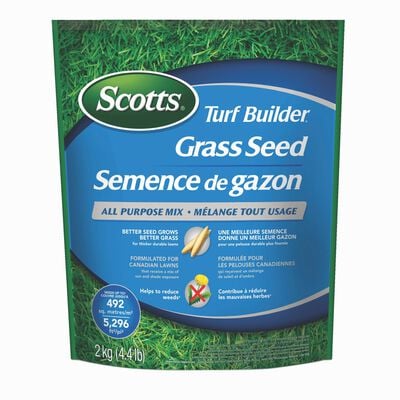
Planting Grass Seed In Fall
Fall does what no other season can do. Its warm, sunny days and cool, dewy nights provide ideal conditions for growing new grass and developing your lawn's source of strength, a deep and dense root system.
Your most successful seeding time is right around Labor Day. Seeding 2 weeks before or after that easy-to-remember holiday gives your new seedlings time to build strong roots. In fact, overseeding with grass seed and fertilizer in the fall can make your lawn up to 49% thicker next spring* and it will be better able to resist weeds and summer stresses.
*2008-2009 Scotts Field Trials, Marysville, OH vs. no treatment.
Choose the Right Seed
Most Canadian lawns are a blend of perennial ryegrass, Kentucky Bluegrass, and fescues. But all grass seeds are not created equal, top quality grass seeds improve the results exponentially and can make the entire process much easier. So it's important to choose a high-quality mixture such as Scotts® Turf Builder® Coated Grass Seed, specially formulated by the lawn experts at Scotts Canada for quick coverage and a long-lasting lawn in a variety of conditions. Scotts' experts say that the amount of sun exposure is the most important determinant in choosing the right blend for your lawn. A Sun and Shade Mix is the best all-purpose choice while other mixes such as Sunny, Shady, Heat & Drought etc. are available for those specific conditions.
Overseed
Mow grass closely, and loosen the top 6 mm (1/4 inch) of soil in bare or thin areas. Add 6 mm (1/4 inch) of weed free lawn soil to the area. Distribute the seed evenly. For best results, use a hand-held or a rotary spreader. Apply a seed starter fertilizer to increase seeding success and then water thoroughly. Remember, watering is crucial to seed germination. Keep the top 1 cm (1/2 inch) of soil damp by watering daily until all seedlings are up and the lawn is established.
